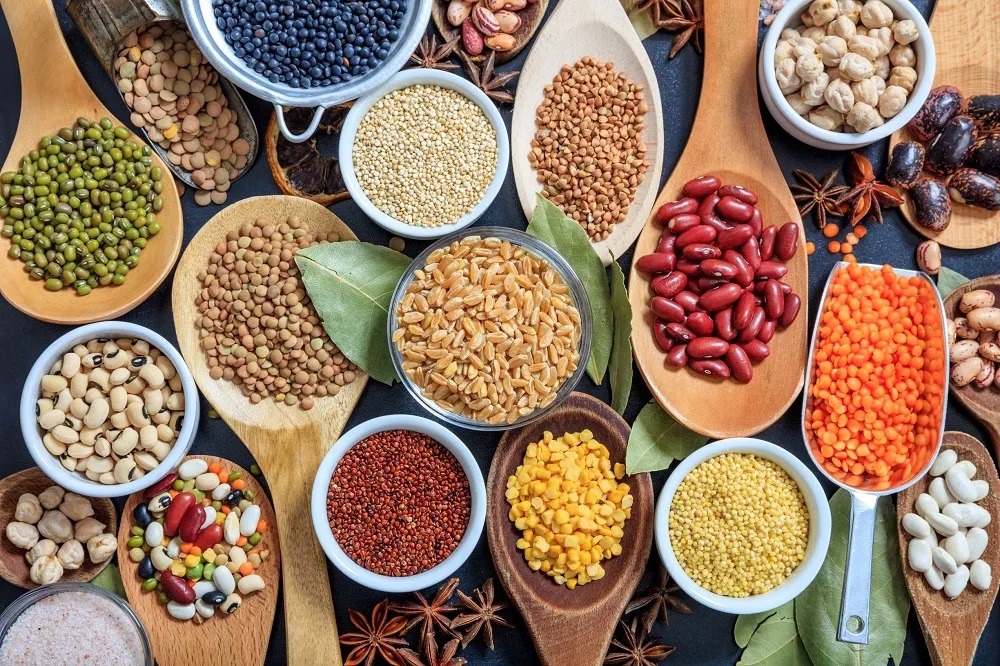Australia: Winter to date ideal for lentils, fabas

Markets for Australia’s lentils and faba beans have been relatively stable in the past month as the new-crop outlook for both pulses consolidates.
Chickpea prices have eased in the past month amid mixed prospects for new crop.
As bulk volumes tail off, traders report container business is back to its pre-COVID volumes, a welcome development as Australia enters the final third of its winter-crop marketing year.
Chickpea prices have softened slightly in the past month, and the market is sitting at around $610 per tonne for multigrade loads delivered Brisbane port, where at least another two cargoes are booked to load before new-crop arrives.
Up-country packers are bidding around $560/t for CHKPM, or $650/t delivered container terminal.
RainAg regional manager Scott Merson said the bulk market was still absorbing reasonable volume, with discounts factored in for off-spec loads.
“Bulk can offer a multigrade price because it can be blended,” Mr Merson said.
Volume sales of chickpeas are headed mostly for Pakistan, and some new-crop interest has emerged at the regular time from the major volume market in the front months of the shipping year.
“We’re getting some early inquiry for new crop into Bangladesh.”
Chickpea crops in Central Queensland and Qld’s Western Downs are enjoying the best of the season to date, with area in northern NSW expected to be severely limited by dry conditions.
ABARES has forecast Qld new-crop area at 250,000ha, and this has been sown on time and in good conditions.
NSW was pencilled in by ABARES to plant 170,000ha, but the actual figure may be up to half of that because conditions are so dry in an area bounded by Walgett and Wee Waa in NSW, and Toobeah, north of the Qld-NSW border.
“If we get to 400,000t, we’ll be doing well,” Mr Merson said of new crop.
Prices for faba beans have changed little over the past month, and continue to trade at around $450-$460/t delivered feedmills in the Melbourne region.
As usual, Egypt has been the biggest customer by far, and Australian export data shows 2022-23 November-May shipments to Egypt are around two-thirds of the corresponding 2021-22 period.
Agri-Oz Exports managing director Francois Darcas said local supplies have tightened as secondary markets come into play.
“Total exports have run at 82pc of last year’s, as some other destinations have picked up the slack,” Mr Darcas said.
“Domestic feed demand has increased a lot.
“This is particularly true in South Australia, which has seen the majority of exports, where stocks appear to run low with a $430/t track bid remaining mostly unfilled.”
Crop conditions for faba beans across Australia are generally good, even in the dry north-west of NSW, because fabas were planted in April or early May, and into good subsoil moisture.
Provided spring is kind and disease is not an issue, the southern Australian crop is on track for average or better yields.
Trade sources report at least 100 containers of Australian faba beans are in the possession of the Thai Government following unidentified counterparties not collecting them from the port of Laem Chabang.
Grain Central understands the Australian Embassy in Bangkok become aware of the issue earlier this month, and has continued to engage with affected companies, Thai Customs and the Thai Ministry of Foreign Affairs on the matter.
Lentil values have traded sideways since early June, with prices fluctuating mostly on currency moves now that bulk volume is tailing off in the back months of the shipping year.
Export focus has shifted to containers, with No. 1 Nipper types trading at around $750/t delivered up-country packer, at $680/t plus for No. 2 grade and around $500/t for No. 3 grade.
ETG Wimmera-based trader Todd Krahe said reasonable volumes of lentils were still trading to fill part rather than full cargoes, and into the container market, now that at least an average crop seems likely.
“Growers are happy with rain through June, and we couldn’t ask for better conditions,” Mr Krahe said.
However, seasonal outlooks remain pointed at a redeveloping El Niño.
“Everyone’s concerned the tap might turn off.”
ETG is one of several businesses that switched its focus from exporting lentils in containers to shipping in bulk as a function of the expense and difficulty since 2020 of getting containerised pulses to South Asia and beyond.
“We’ve done 90pc bulk in the past two years, which has been a complete turnaround for us.
“Bulk will always have its place for us, but we’re back to doing more containers now.”
Mr Krahe said Canada has a few weeks to go before it starts the main body of its lentil harvest in what for most has been a very dry season.
“All eyes are on them from a weather perspective.”
Canada produced a red lentil crop of around 1.8 million tonnes (Mt) last year, and production from the upcoming harvest is expected to be down by around one third due to the lack of precipitation.
Mungbeans have all but sold out, and with planting of new crop some months away, trade and interest is negligible.
Read also
Wheat in Southern Brazil Impacted by Dry Weather and Frosts
Oilseed Industry. Leaders and Strategies in the Times of a Great Change
Black Sea & Danube Region: Oilseed and Vegoil Markets Within Ongoing Transfor...
Serbia. The drought will cause extremely high losses for farmers this year
2023/24 Safrinha Corn in Brazil 91% Harvested
Write to us
Our manager will contact you soon



